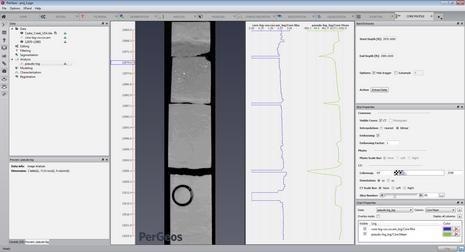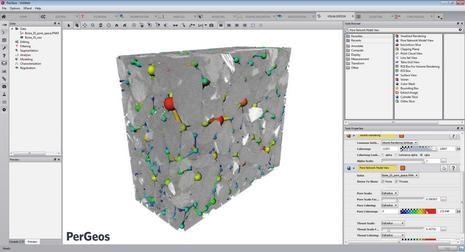The Thermo Scientific™ PerGeos™ software package from Thermo Fisher provides an adaptable modular architecture engineered to offer new capabilities to be deployed rapidly, as soon as they are developed. Thanks to this built-in flexibility, PerGeos™ offers users an adaptive environment, well suited for a range of daily interactions with core samples.
Besides the automated image processing workflows incorporated in the package, PerGeos™ is completely compatible with various additional applications, each offering a unique user experience based on their specific needs.
The additional modules help users make specific statistical observations of the working sample before conveying the information (via a digital environment) to the whole asset team for interactive QC.
The modular architecture of the PerGeos™ software provides the following additional applications.
Core Profile Application
The Core Profile Application is created to provide correlated viewing of depth-matched data with whole-core CT data, whole-core photos, and petrophysical logs within a single piece of software.

Image Credit: Thermo Fisher Scientific - Software
The module also encompasses an automated core assembler that automatically aligns, stacks, and stitches whole-core data into a single, whole image. Users can segment and later extract a virtual log from the dataset, which enables them to compare this with conventional petrophysical logs.
Petrophysics Application
The Petrophysics Application provides access to image-based models that enable the simulation of the flow, electrical and thermal properties of the sample. This includes absolute permeability, electrical resistivity, capillary pressure, and formation factor, among others.

Image Credit: Thermo Fisher Scientific - Software
Geologists can use this information to correlate particular depositional structures and environments with related physical behavior. This is a main aspect of reservoir quality.
Pore Statistics Application
With the Pore Statistics Application, users can extract a pore network model from a segmented 3D dataset. This includes pore and pore throat sizes, both of which are vital elements for flow modeling. Upon mining this information, users will be better equipped in predicting the performance of production techniques for a specific reservoir rock type.

Image Credit: Thermo Fisher Scientific - Software
Moreover, this module has specific tools to measure two-phase and three-phase fluids that are observed in microCT imaging. When engineers can associate rock characteristics with physical mechanisms, they are provided a physical basis on which to design the completions and EOR/IOR components needed for a field’s development evolution.
PerGeos Software | Large data visualization and analysis of a sandstone sample
Video Credit: Thermo Fisher Scientific - Software